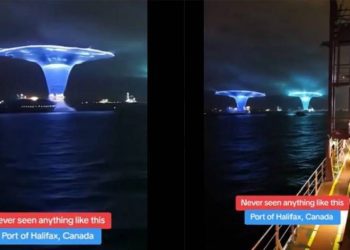A GIANT chunk of a long-lost “microcontinent” that never fully formed has been found.
The failed land mass between North America and Europe was born around 58 million years ago – but was ultimately doomed.



Evidence of the continental mishap was found beneath the Davis Strait.
This is an arm of the Arctic Ocean north of the Labrador Sea between Canada and Greenland.
Scientists say the seafloor beneath the waterway is “anomalously thick” – and now they know why.
It's the eerie remains of what experts are calling the Davis Strait Proto-Microcontinent (or DSPM).
The 12- to 15-mile thick segment of crust lies beneath the strait, which gets as deep as 6,500 feet in parts.
“We propose that the Davis Strait High and the surrounding region of thick continental crust represents a proto-microcontinent,” said Luke Longley, of the University of Derby, in a study published in Gondwana Research.
A microcontinent is a piece of continent that broke off from a main continental mass to become its own distinct chunk.
The “proto” part means that it did not achieve “full crustal separation”, according to scientists.
It's all linked to the great pulling-apart of North America and Greenland, which took place 120 million years ago.
And this process was supercharged around 61 million years ago, with the floor below the Davis Strait spreading more quickly.
Another three to five million years later, the DSPM was created.
Ultimately North America and Greenland (which is a European territory, but physically part of the North American continent) did not fully split apart.
This process largely ended 48 million years ago, when a fault formed that created a boundary that stopped the rifting “before continental break-up could occur”, the scientists said.
And around 33 million years ago, seafloor spreading meant Greenland rotated and collided with Canada's Ellesmere Island, totally ending the shift.

So the DSPM is just a small chunk of a continent that could have formed as part of the break-up – but never truly did.
The North American continent itself is enormous, covering around 9.54 million square miles.
It represents around 16.5% of Earth's land, and is the third-largest continent by size after Asia and Africa.
The massive continent – which still includes Greenland – has a population of more than 592 million people.
CONTINENTAL CONFUSION – THE DIFFERENT LISTS
There are several ways to categorize continents. Here are just a few…
Continuous Landmasses (x4):
- Afro-Eurasia
- America
- Antarctica
- Australia
Physiographic Regions (x5):
- Africa
- Eurasia
- America
- Antarctica
- Australia
Geological Continents (x6):
- Africa
- Eurasia
- North America
- South America
- Antarctica
- Australia
United Nations continental regions (x6):
- Africa
- Asia
- Europe
- America
- Antarctica
- Australia
Approximate “parts” of the world (x7):
- Africa
- Asia
- Europe
- North America
- South America
- Antarctica
- Australia
It was originally part of the Pangea supercontinent.
But North and South America split off from Europe and Africa around 200 million years ago.
































